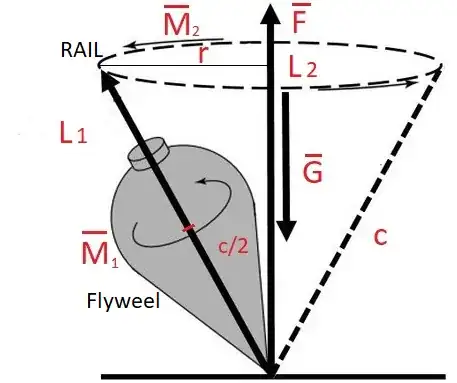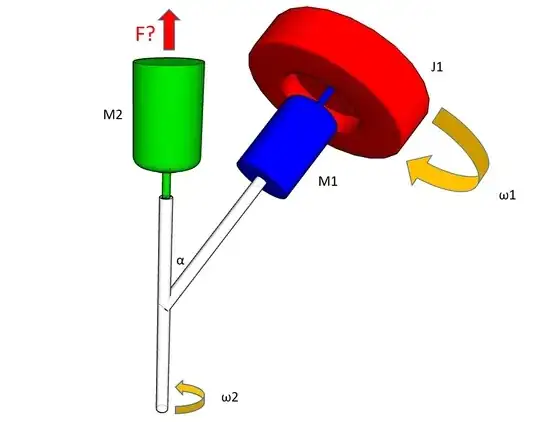I have an idea that a powered for rotation gyroscope with fixed precession can serve as antigravity engine. I also wonder of someone tried an experiment to prove that it does not work.
The following kinematic scheme should be solved to prove it wrong or right:
Legend:
- The Flywheel is powered with some electric engine1, having rotation moment M1 and angular momentum L1.
- The free end of Flywheel axe goes on circle of the RAIL. The rotation of the precession movement is powered with some electric engine2, having rotation moment M2 and angular momentum L2 (I am not sure if it is fair that there is a stable angular momentum).
- The whole system has some weight (m), the gravity force acts as G
The question is the following: What are the conditions that this system works, creating the lifting force F acting opposite gravity force G.
Most probably I am wrong and there is no lifting force appearing in the task, however if there is a bit of truth at least, the mechanical gravity engine is feasible if this idea will be further developed.
Sincerely, Alexander Spacelifter
edited 12/04/2022: I have prepared the following rendering, which may better describe the topic:
edited 13/04/2022: I believe, that the forced rotation to increase angular speed of precession movement may create “some” force as proposed by many other people doing the research and experiments with gyroscopes. However, I watched a lot of video clips on YouTube, and did not find any experiment where the angular speed of forced precession movement is reaching or exceeding the angular speed of gyroscope rotation. Moreover, not a single video of experiment where the efficient motors will be in relevant balance with gyroscope flywheel(s) weight. I mean, if the power of motors, speed of rotation and weight of apparatus will not be balanced, even the aerodynamic apparatus, like quadcopters, are not flying. Certain conditions should met.

